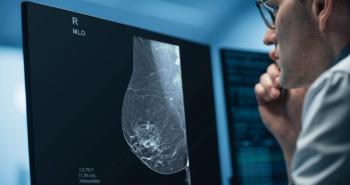
Elastography monitors ablation therapy progress
Ultrasound elastography is being proposed as a way to guide and monitor ablation therapy. Researchers say elastography could help ultrasound overcome limitations in this setting, and increase its visibility among other imaging modalities used for guidance.
Ultrasound elastography is being proposed as a way to guide and monitor ablation therapy. Researchers say elastography could help ultrasound overcome limitations in this setting, and increase its visibility among other imaging modalities used for guidance.
As the prevalence of liver cancer increases, physicians foresee a boom in utilization of radiofrequency and other thermal ablation procedures. Therefore, considerable procedural sophistication is needed. Ultrasound is one of the preferred imaging modalities for radiofrequency ablation guidance. However, the bubbling effect produced by thermal coagulation in tissue typically impairs sonographic visualization. Elastography helps overcome this problem by echoing tissue strain in the zone of necrosis, said Flemming Forsberg, Ph.D., a professor of radiology at Thomas Jefferson University in Philadelphia.
A research team led by James A. Zagzebski, Ph.D., and Tomy Varghese, ultrasound imaging experts in the medical physics department at the University of Wisconsin in Madison, recently unveiled results on an RFA-based technique called electrode displacement elastography. This method enhances lesion targeting by reducing sliding and motion of abdominal organs undergoing ablation. They presented their findings at the 2006 American Institute of Ultrasound in Medicine meeting in March.
"Elastographic ultrasound guidance should make procedures faster and you may get away with killing less tissue," Forsberg said. "There are still some lesions we don't see very well with ultrasound. But it becomes a trade-off when radiation is an issue. We are doing more and more ablation therapy these days. This means we could do more RFA with ultrasound that otherwise used to be performed with CT for guidance."
Newsletter
Stay at the forefront of radiology with the Diagnostic Imaging newsletter, delivering the latest news, clinical insights, and imaging advancements for today’s radiologists.




























